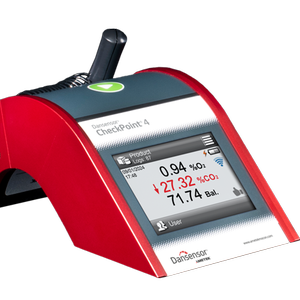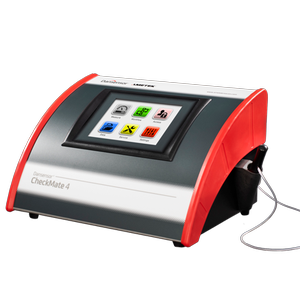NUTRACEUTICALS AND SUPPLEMENTS
Almost half (47.6%) of New Zealanders aged 15 and over report taking supplements, while just over 3 in 10 are “regular users”. Is it any wonder then that the nutraceutical, healthcare and supplement market is hugely varied and highly competitive?
To succeed in such a competitive landscape means delivering a high quality, trustworthy and consistent product. This, in turn, means rigorous quality control (QC), exacting standards and strict monitoring to ensure that product quality standards are met, and customer trust is maintained
There are two considerations that are not always complementary when answering a question such as “which method is better”. The goals that a well-informed QC manager/auditor needs to meet
· Am I achieving the best possible quality, consistency, and profitability for my product?
· Am I meeting all regulatory and safety standards and can I demonstrate this?
For the contract manufacturer there is also a third goal that is independent of the other two
· Am I meeting the quality standards/CCPs that are set-out in the manufacturing agreement?
With more than 35 ways of determining moisture content outlined in AOAC methods, the use of moisture content as a quality control metric is quickly being replaced by the use of water activity in most applications.
Not only does water activity provide a better prediction of product safety, there is also a primary test method (Dew Point Mirror) that provides a far greater level of repeatability and standardisation across different staff and locations than moisture content can.
Moisture content has not been completely replaced however – some production procedures and regulatory clients still request this as a QC metric. To meet these requirements, Meter Food have created the Aqualab AQ3, which can give BOTH moisture content AND water activity with a single test that delivers results in only 60 seconds.
For the nutraceutical/supplement/pharmaceutical manufacturer the Aqualab AQ3 has the added advantage of offering full compliance with 21CFR Part 11 requirements.
In simple terms, crystals, lumps and clumps will form in a powder when there is too much moisture present. This leads to a poor customer experience and can cause both dissatisfactions, and, just as importantly, the degradation of active ingredients.
The primary reason for gas flushing any product is to extend the shelf-life and/or provide a “better” customer experience. This can mean Modifying the Atmosphere of the Package (i.e MAP) by replacing oxygen with an inert gas (normally nitrogen) or carbon dioxide to slow down/prevent oxygen driven reactions and degradation or replacing atmospheric air that is high in humidity with a very dry modified atmosphere to prevent increases in the water activity of a powder.
Mätt Solutions offer a specialised consultancy service call “MAP Lab” that can help to determine
· Will a specific product benefit from gas flushing/being packed in a modified atmosphere
· What gas mix is appropriate (or best) to meet specific goals
How much will gas flushing extend the shelf-life of a specific product
This is a very common problem with multi-component powders where the different components have different water activities. Most of us will remember from our high school chemistry classes that water will always move from an area of high concentration to an area of low concentration. Meter Group, who are specialists in tools for monitoring and measuring water activity have a very good explanation of this process on their website titled “Predict Moisture Migration with Water Activity”
For further advice on how a powder may change on the shelf, and help in solving challenges with crystals, lumps or clumps, Matt Solutions can generate a Moisture Sorption Isotherm which can be an invaluable quality control tool and provide information to establish production CCP targets.
When producing a serum, syrup, gel or paste the viscosity can be important in several areas:
· The viscosity or “flowability” of a liquid informs of the pump strength required when moving the product through the production process
· The filling nozzle size/flow rate of the filling head will be impacted by the viscosity
· Customer perceptions of quality are related to viscosity – a “watery” product is perceived to be of lower quality, regardless of the level of active ingredients.
Viscosity is measured on a viscometer – an instrument that inserts a spindle into the liquid and then measures the resistance as the spindle turns. The results are normally given in either centipoises or millipascals.
The HIGHER the millipascal/centipoise rating, the LESS “runny” (or viscous) a product is.
Water will normally have a rating of around 1 Centipoises, while a product like honey or chocolate syrup may be at about 10,000 Centiposies.
NO. Generally a liquid becomes “runnier” (or less viscous) as the temperature increases, but this relationship is not always predictable or linear. The “normal” temperature for testing viscosity is room temperature, which is assumed to be 25⁰C. If the viscosity needs to be tested at a specific temperature that is higher or lower than “ambient” then a viscometer with temperature control may be required.
YES – blister packs, used to keep individual doses of medication or supplements safe until use can be tested for seal integrity using the “blue dye test” The test is made by submerging a package into a blue dye solution, the test chamber is placed under a vacuum that forces air from any openings within the pack. After returning to ambient pressure, the dye will penetrate and be evident within the pack should any holes be present.
For consistent, reproducible and reliable blue dye tests Matt Solutions is able to supply and support the Dansensor H20.
If the seal strength is important as part of quality control parameters or when designing new packaging, then the Danensor Lippke 5000 can help with Burst, leak, creep, bubble and combined test options
A blue dye test refers to a commonly used method of checking the seal integrity of all types of blister packs used in the nutraceutical/pharmaceutical industry. To complete a test, a sample blister pack in placed in a chamber with coloured water, a vacuum is drawn in the chamber and then released.
If there are any leaks in the blister pack, the vacuum will draw the headspace gas out of the pack, and when the vacuum is released there will be the ingress of (easily visible) blue water.
One instrument capable of completing a “blue dye test” is the Dansensor H2O
CFR21 (Code of Federal Regulations title 21) Part 11 is a set of standards where electronic records and electronic signatures are considered trustworthy, reliable, and equivalent to paper records. At its simplest level, compliance with the standard requires that records cannot be edited or changed after a reading/measurement has been taken.
If compliance with CFR21 part 11 or GMP (Good Manufacturing Practises) is required as part of a HACCP, export requirements or supply agreement, Mätt Solutions would be most happy to hear from you and discuss how best to adhere to the requirements for specific production facilities.
Mätt Solutions offer shelf-life testing services that look at the product's "complete picture", considering all its aspects to determine when and what ends the shelf life for supplements or nutraceuticals. Packaging provides protection from extremes in light, temperature, humidity and oxygen all of which will reduce shelf-life if not controlled. To perform an accurate shelf-life test, it is imperative to expose the product to different conditions to know when and why it fails.
Mätt Solutions have a wide selection of chambers and simulation set-ups to test these extremes and help determine the shelf-life and durability of nutraceuticals/supplements by offering both accelerated and real time shelf-life studies as applicable. The verification of label claims can be included in the shelf-life trial. At the end of the trial, a comprehensive report is provided that states the actual shelf-life of the product, outlines reasons for failure and in most cases recommends ways to improve. This report tends to be a requirement by most supermarket chains and is well received by auditors and MPI (Ministry of Primary Industries)
Applicable Instruments
-

CheckPoint 3 - Portable Gas Analyser
Portable gas analyser with long lasting sensor compared to previous models.
-

High-capacity gas mixer - MAP Mix Provectus
Gas mixer for both flow and buffer tank application
-

Continuous gas analyzer - MAP Check 3
The continuous gas analyzer is designed to precisely monitor gas content on packaging machines.
-

CheckMate 3 - Benchtop Gas Analyser
Accurate Benchtop Oxygen (O2) / Carbon Dioxide (CO2) gas analyser
-

High-capacity gas mixer - MAP Mix Provectus
Gas mixer capable for mixing Argon gas for the metal industry.
-

Low-capacity gas mixer - MAP Mix 9001
Proportional gas mixing of carbon dioxide, oxygen and the inert gases nitrogen and argon used either in a 2-gas or 3-gas combination.
-

MAP leak detection - LeakPointer 3
Efficient non-destructive leak detection in Modified Atmosphere Packaging.
-

LeakMatic II - Packaging Leak Tester
Fully automatic non-destructive in-line leak detector
-

Lippke Leak System
Leakage and seal strength testing system for practically all types of flexible, semi rigid and rigid packages
-

Pack-Vac Leak Detector
Water bath vacuum leak detector.
-

Sonicator Homogenisers
Fast, specialised and easy-to-use homogenizer
-

Human Milk Analyzer
Measures energy, fat, carbohydrate, and protein content in human milk
-

AUROFLOW KITS
Lateral flow strip tests.
-

Eutech PC 700 Multi-Paramter Bench Instrument
Measures pH, ORP, Conductivity and Temperature all in one unit.
-

Digital Hand-held Refractometers
Compact digital refractometer helps eliminate user-related reading errors
-

Pawkit Water Activity Meter
Pocket-size and portable water activity instrument.
-

Water activity meter - Aqualab Series 4TE
Fastest most accurate water activity meter
-

Aqualab Vapour Sorption Analyser
Allows you to measure both DVS and DDI isotherms on your product
-

Water activity meter - Aqualab Series 4TE Duo
Can measure water activity and get moisture content simultaneously from a single sample
-

CheckPoint 4 – Superior Portable Headspace Analyzer
Portable gas analyzer for quality control of modified atmosphere packages (MAP).
-

CheckMate 4 - Headspace Gas Analyzer
ACCURATE, FAST AND RELIABLE HEADSPACE GAS TESTING
